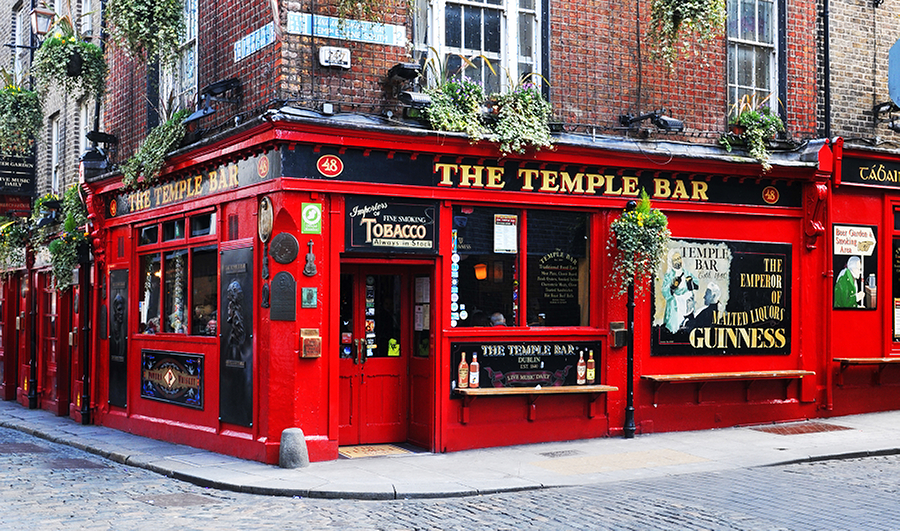Contributed By: The Travel Institute
This month, we continue to highlight the very popular destination of Ireland, with a focus on some of its outstanding culinary contributions.
To gain more comprehensive knowledge, you can explore Ireland and its neighbors in The Travel Institute’s Northern Europe Destination Specialist Course.
But for this final installment in our three-part series of articles, we turned again to one of our professional educators, Evan McElligott, CTA, Owner of Independent Ireland, which specializes in customized FITs and small groups. Here are his thoughts on his home country’s evolving cuisine:
I can’t think of another nation that has turned dining on its head as much as Ireland has in the last decade or so: a narrative that involves its past, as much as its future. But what lies ahead for this little island nation will prove Ireland to be a world-class destination in the global gastronomic scene.
Ireland’s Reinvented Gastro Identity
First of all, cast aside everything you know about the Irish culinary scene. Forget stews, forget pies—shepherds or otherwise—forget corned-beef and even forget potato mashed with cabbage. This is a leaf out of a recipe book from a time when our parents and grandparents left a country in the middle of a famine. They didn’t have a choice; we do. Of course, that’s not to say this cookbook cannot be a source of inspiration to a modern-day chef, but, if you are visiting Ireland nowadays and eating only “traditional” food, you’re literally leaving an incredible experience on the table.
Think about it: an island surrounded by ocean, with a mild climate, nutrient-rich fertile soil and plenty of year-round rainfall and sunlight. Makes sense the island would yield a variety of flavorful, rich foods well beyond the age-old Irish food stereotype, right? Well, world-class chefs, producers, and purveyors seem to think so. And many are even betting their livelihoods on it.
Cattle eat lush green grass, farmers milk these same cattle, and the magic happens: think milk, cream, cheese, butter. YUM! Then think beyond that to smooth, creamy, delicious ice cream! It’s incredible. Think free-range, grass-fed, non-GMO meats. It’s the only way meat was ever supposed to taste. Now think grains (the bread is to die for), herbs, and seasonings. I think you’re getting an idea of what I’m talking about here.
If travel is about anything, it’s about discovery and being adventurous. Trust me…your clients are going to thank you for putting them onto this. Suggest they visit local markets and pack picnics. Suggest The English Market in Cork or any weekend market anywhere. Suggest planning a trip around a food festival or doing a food tour or cookery lesson. Then be sure to recommend restaurants that know what they’re doing and aren’t serving up 200-year-old slop.
I’ll have a pin!
That used to mean only one thing in Ireland: a pint of plain…a pint of the Black stuff. Nowadays, it’s a bit more complex.
Yes, Guinness has been very good to the island over the years, and those fresh ingredients I mentioned earlier have been very good to the Guinness family in return. So much of Ireland’s story is interwoven into the Guinness story, and visiting St James Gate feels like a pilgrimage to many. There is just something about it.
But some brewers quickly learned that those same fresh ingredients also make other lovely beers, and the island’s tastes and preferences are evolving. Nowadays, a pub’s line-up is as likely to have many locally sourced craft beers available, and each County also is likely to have its own popular beer—or many of them! Sharing this valuable information is a great way for your clients to feel connected to the place, and they, in turn, can support and contribute to the local economy and small businesses while visiting.
Finally, diving back into the history books and opening up the chapter on whiskey can be a bit of a rabbit hole, but we can’t deny the excellent reputation that Irish Whiskey has around the globe. This story itself is the topic of many books—and debates! Beyond the distilleries, there is a Whiskey Museum in Dublin that will shed a lot of light on the topic. Jameson produces a wide variety of what we now see internationally; Bushmills also has its fair share.
But it also is wise to keep our eyes on some small (and some not-so-small) distilleries sprouting up all over the country. Time will tell as they all age and mature, but there are a few beauties currently out there. Teeling, Clonalkilty, and Dingle are a few that spring to mind and remain Irish owned, all offering a great visitor experience. If your clients are in the Limerick region, be sure to send them to the Home of Irish coffee in Foynes.
Thank you, Evan!
To learn more about the Republic of Ireland, enroll in The Institute’s Northern Europe Destination Specialist Course, comprising Scandinavia and The British Isles. The Northern Europe course is the first release in a new, multi-part Europe series designed to educate agents about the region using an in-depth, comprehensive overview designed to enable additional sales.
A collaborative industry effort created in 1964, The Travel Institute® has continuously evolved to maintain its role as the global leader in industry education and certification while staying true to its mission: dedicated solely to advancing the professionalism of both agents and industry leaders. A trusted partner to industry suppliers and educational institutions, The Travel Institute has educated hundreds of thousands of professionals through its programs. Throughout North America, many successful agents and high-profile leaders credit their success to coursework from The Travel Institute.



